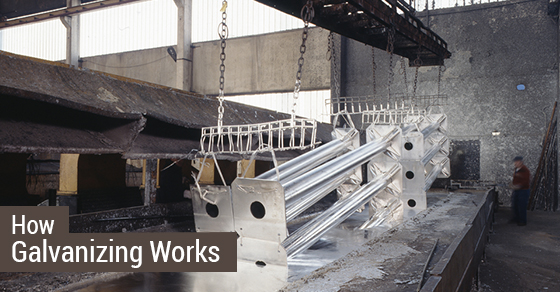Galvanized steel is one of the strongest construction materials known to man, and it has been used for centuries in the building of bridges, skyscrapers, and many other steel frame structures that demand long-term durability and sustainability. The main aim of the galvanization process is to significantly increase the metal’s anti-corrosive properties, thus effectively preventing rust and premature wear and tear.
A company that pays the extra cost to have this done is making an excellent investment, one that markedly enhances the lifespan of its commercial lifts and which safeguards it from the elements. This procedure is particularly important in coastal regions where salt air corrosion is rampant, or in areas with inclement weather seasons like Canada.
How the Hot-Dip Process Works
Hot-dip galvanizing (HDG) is the most common type, and it entails the dipping of fabricated steel sections into vats of molten zinc. While alternative methods of corrosion protection do exist, HDG is widely considered to be the most effective. The main reason for this is the chemical bond that occurs when the steel comes into contact with the zinc, or more specifically, the iron that is present in the steel itself.
On an ionic level, the two elements come together to form a very strong alloy coating, one which is tightly bonded and shields the metal from any chance of possible corrosion. Otherwise known as after-fabrication or general galvanization (due to its widespread use), the hot dipping can be safely used in conjunction with a wide spectrum of zinc coatings.
Why Hot-Dipping is Important
In light of recent technological advancements, hot-dip galvanizing is no longer used solely for its anti-corrosion benefits; the procedure has evolved in such a way that current steel manufacturers now use it to make their products more versatile, affordable, and aesthetically appealing. All told, hot-dipped steel has essentially set the standard for modern lift practices.
One question many people who purchase this type of steel have is how long the effects of hot-dipping last. Wear and tear is an understandable concern considering what most lifts are used for, but the great news is that galvanized steel can last up to 30 times as long as standard steel in the same environment.
Needless to say, the rate of corrosion is far slower when the metal has been subjected to hot-dipping. Of course, the precise rate depends on the thickness of the coating being used, but nevertheless, any one of these protective coats is highly recommended.


